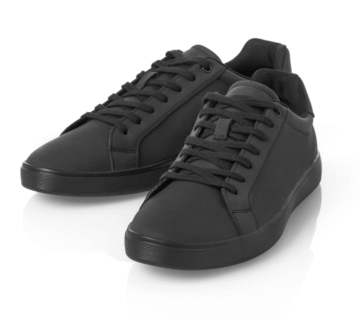Diabetes and Your Feet: Protecting Circulation and Nerve Function
Living with diabetes means managing your blood sugar, but it’s just as crucial to manage the health of your feet. The effects of high blood glucose over time can silently damage the intricate network of nerves and blood vessels in your lower extremities, leading to two major, interconnected complications: diabetic neuropathy (nerve damage) and Peripheral Artery Disease (PAD) (poor circulation). Understanding this link is the first step toward lifelong protection.
🛑 The Silent Threat: Diabetic Neuropathy
Diabetic neuropathy is nerve damage most commonly affecting the legs and feet. This complication is a result of prolonged high blood sugar levels, which essentially injure the small blood vessels supplying your nerves with vital oxygen and nutrients.
Symptoms of Nerve Damage:
- Numbness: This is perhaps the most dangerous symptom, as it leads to a loss of the ability to feel pain, temperature, or minor injuries. You might not notice a blister, cut, or even a foreign object in your shoe until it becomes a serious infection.
- Tingling or Burning: Often described as a “pins and needles” sensation.
- Sharp Pain or Cramps: These can be particularly bothersome, often worsening at night.
- Muscle Weakness: Can lead to changes in the shape of your feet over time, such as Charcot’s foot.
- Increased Sensitivity: Sometimes, even the weight of a bedsheet can be painful.
This loss of “protective sensation” means a small injury can quickly escalate, becoming an ulcer (open sore) without you ever feeling the pain that would normally prompt immediate action.
🩸 The Circulation Crisis: Peripheral Artery Disease (PAD)
Poor circulation, or Peripheral Artery Disease (PAD), is another major complication for people with diabetes. High blood sugar contributes to the buildup of fatty deposits (plaque) inside the blood vessels, causing them to narrow and harden (a condition called atherosclerosis).
When this happens in the arteries supplying the legs and feet, it significantly reduces blood flow.
Why is Poor Circulation a Problem for Your Feet?
- Impaired Healing: Less blood flow means less oxygen, fewer immune cells, and fewer healing nutrients reach the tissue in your feet. Even a small cut or ulcer will take much longer to heal.
- Increased Infection Risk: The body’s ability to fight off bacteria and infection is severely compromised, allowing infections to spread quickly.
- Tissue Death (Gangrene): In severe cases, tissues don’t get enough blood to survive, leading to tissue death, or gangrene. This is the most common path to a lower-limb amputation.
Symptoms of Poor Circulation:
- Intermittent Claudication: Pain or cramping in your calves, thighs, or buttocks during physical activity (like walking) that goes away with rest.
- Cold Feet: Your feet may feel cold, especially when compared to the rest of your leg.
- Skin Changes: Shiny, thin skin, loss of hair on the feet and lower legs, and changes in skin color (like a pale or bluish tone).
- Slow-Healing Wounds: Wounds, sores, or ulcers that take an unusually long time to heal.
- No or Weak Pulse: A diminished or absent pulse in your feet.
🔗 The Dangerous Duo: Neuropathy Meets PAD
The combination of nerve damage and poor circulation creates a devastating synergy. You have a foot that can’t feel a developing injury (neuropathy) and a body that can’t properly heal or fight infection when one occurs (PAD). This is why a simple blister can become a life-threatening complication for a person with diabetes.
✅ Your Action Plan: Essential Foot Care
The good news is that you can actively manage and significantly reduce the risk of these complications. Prevention is the single most powerful tool you have.
1. Control Your Blood Sugar (Keyword: Diabetes Management)
- Keep your blood glucose levels within your target range as recommended by your doctor. This is the foundation for preventing nerve and vessel damage.
2. Practice Daily Foot Checks (Keyword: Daily Foot Inspection)
- Look: Inspect your entire foot every day—top, bottom, and between the toes. Use a mirror or ask a family member for help. Look for cuts, blisters, redness, swelling, or bruises.
- Wash: Wash your feet daily with lukewarm water and mild soap. Dry them thoroughly, especially between the toes.
- Moisturize: Use lotion on the top and bottom of your feet to prevent cracking, but never between the toes, as excess moisture can encourage fungal growth.
3. Wear Protective Footwear (Keyword: Diabetic Footwear)
- Never Walk Barefoot: Not even at home. Always wear socks, slippers, or shoes to protect against accidental injury.
- Check Inside Shoes: Before putting on shoes, check the inside for pebbles, rough seams, or damaged lining.
- Proper Fit: Wear comfortable, well-fitting shoes that protect your feet. Ask your doctor about therapeutic shoes or inserts if you have existing neuropathy or foot deformities.
4. Improve Circulation (Keyword: Exercise and Blood Flow)
- Stay Active: Gentle activities like walking, swimming, or riding a bike are great for stimulating blood flow to your legs and feet.
- Elevate: Put your feet up when sitting to help blood return to your heart.
- Stop Smoking: Smoking is one of the biggest risk factors for poor circulation and must be avoided.
5. Regular Professional Care (Keyword: Podiatrist Visit)
- Have a full foot exam by a healthcare provider at least once a year—or more often if you have existing complications.
- Let a professional (like a podiatrist) handle corns, calluses, or difficult-to-trim toenails to prevent accidental cuts.
Taking these steps helps preserve your ability to walk comfortably and maintain your overall independence and quality of life. Be proactive, be vigilant, and keep your feet healthy!





No comment